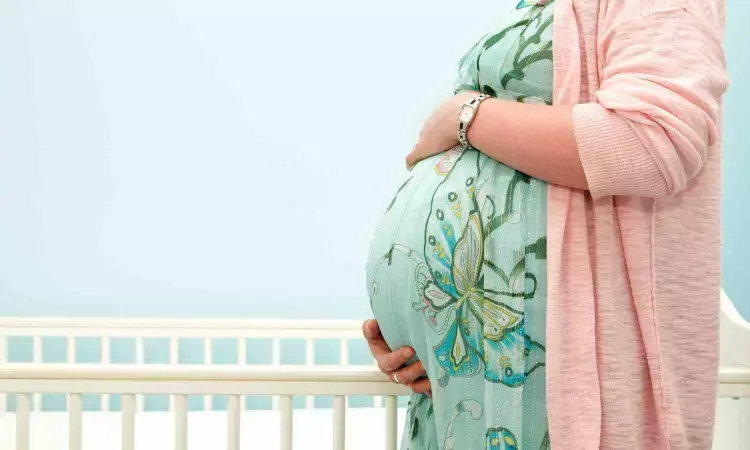- Home
- Medical news & Guidelines
- Anesthesiology
- Cardiology and CTVS
- Critical Care
- Dentistry
- Dermatology
- Diabetes and Endocrinology
- ENT
- Gastroenterology
- Medicine
- Nephrology
- Neurology
- Obstretics-Gynaecology
- Oncology
- Ophthalmology
- Orthopaedics
- Pediatrics-Neonatology
- Psychiatry
- Pulmonology
- Radiology
- Surgery
- Urology
- Laboratory Medicine
- Diet
- Nursing
- Paramedical
- Physiotherapy
- Health news
- Fact Check
- Bone Health Fact Check
- Brain Health Fact Check
- Cancer Related Fact Check
- Child Care Fact Check
- Dental and oral health fact check
- Diabetes and metabolic health fact check
- Diet and Nutrition Fact Check
- Eye and ENT Care Fact Check
- Fitness fact check
- Gut health fact check
- Heart health fact check
- Kidney health fact check
- Medical education fact check
- Men's health fact check
- Respiratory fact check
- Skin and hair care fact check
- Vaccine and Immunization fact check
- Women's health fact check
- AYUSH
- State News
- Andaman and Nicobar Islands
- Andhra Pradesh
- Arunachal Pradesh
- Assam
- Bihar
- Chandigarh
- Chattisgarh
- Dadra and Nagar Haveli
- Daman and Diu
- Delhi
- Goa
- Gujarat
- Haryana
- Himachal Pradesh
- Jammu & Kashmir
- Jharkhand
- Karnataka
- Kerala
- Ladakh
- Lakshadweep
- Madhya Pradesh
- Maharashtra
- Manipur
- Meghalaya
- Mizoram
- Nagaland
- Odisha
- Puducherry
- Punjab
- Rajasthan
- Sikkim
- Tamil Nadu
- Telangana
- Tripura
- Uttar Pradesh
- Uttrakhand
- West Bengal
- Medical Education
- Industry
Maternal and neonatal outcomes following mechanical cervical dilatation similar to those without dilatation for first trimester pregnancy loss: Study

Maternal and neonatal outcomes following mechanical cervical dilatation are similar to those without dilatation for first trimester pregnancy loss suggests a study published in the European Journal of Obstetrics & Gynecology and Reproductive Biology.
Earlier studies have indicated a potential link between dilatation and curettage (D&C) and subsequent preterm delivery, possibly attributed to cervical damage.
This study examines outcomes in pregnancies subsequent to first-trimester curettage with and without cervical dilatation. A retrospective cohort study was conducted on women who conceived after undergoing curettage due to a first trimester pregnancy loss.
Maternal and neonatal outcomes of the subsequent pregnancy were compared between two groups: women who underwent cervical dilatation before their curettage and those who had curettage without dilatation. The primary outcome assessed was the rate of preterm delivery at the subsequent pregnancy, and secondary outcomes included other adverse maternal and neonatal outcomes. Univariate analysis was performed, followed by multiple logistic regression models to calculate adjusted odds ratios (aORs) and 95% confidence intervals (CIs).
RESULTS: Among the 1087 women meeting the inclusion criteria during the study period, 852 (78.4 %) underwent first-trimester curettage with cervical dilatation, while 235 (21.6 %) opted for curettage only. No significant maternal or neonatal different outcomes were noted between the study groups, including preterm delivery (5.5 % vs. 3.5 %, p = 0.16), fertility treatments, placental complications, and mode of delivery. However, deliveries following D&C were associated with higher rates of small for gestational age neonates (7.6 % vs. 3.8 %, p = 0.04). Multivariate analysis revealed that cervical dilation before curettage was not significantly linked to preterm delivery [adjusted odds ratio 0.64 (0.33-1.26), p = 0.20]. The use of cervical dilatation during a curettage procedure for first trimester pregnancy loss, does not confer additional risk of preterm delivery. Further studies are needed to reinforce and validate these results.
Reference:
Margaliot Kalifa, Tal, et al. "Impact of First-trimester Mechanical Cervical Dilatation During Curettage On Maternal and Neonatal Outcomes: a Retrospective Comparative Study." European Journal of Obstetrics, Gynecology, and Reproductive Biology, vol. 300, 2024, pp. 1-5.
Dr. Shravani Dali has completed her BDS from Pravara institute of medical sciences, loni. Following which she extensively worked in the healthcare sector for 2+ years. She has been actively involved in writing blogs in field of health and wellness. Currently she is pursuing her Masters of public health-health administration from Tata institute of social sciences. She can be contacted at editorial@medicaldialogues.in.


